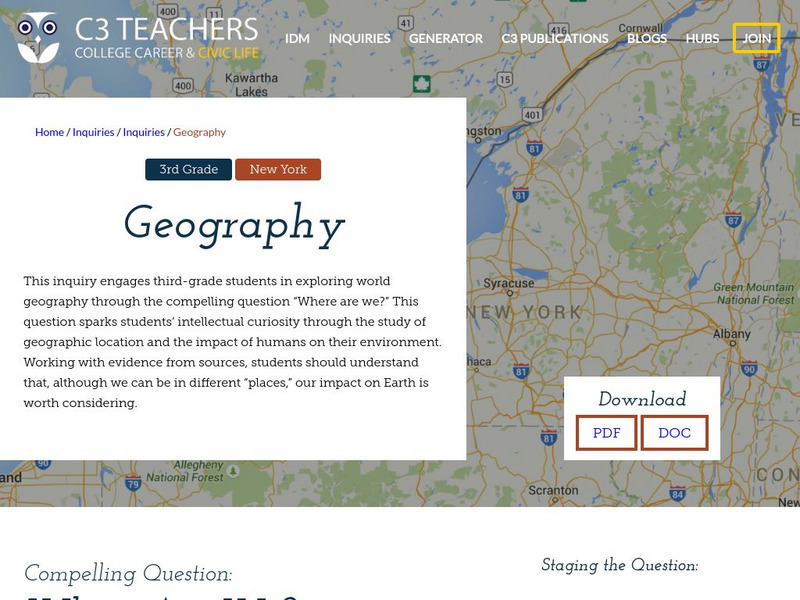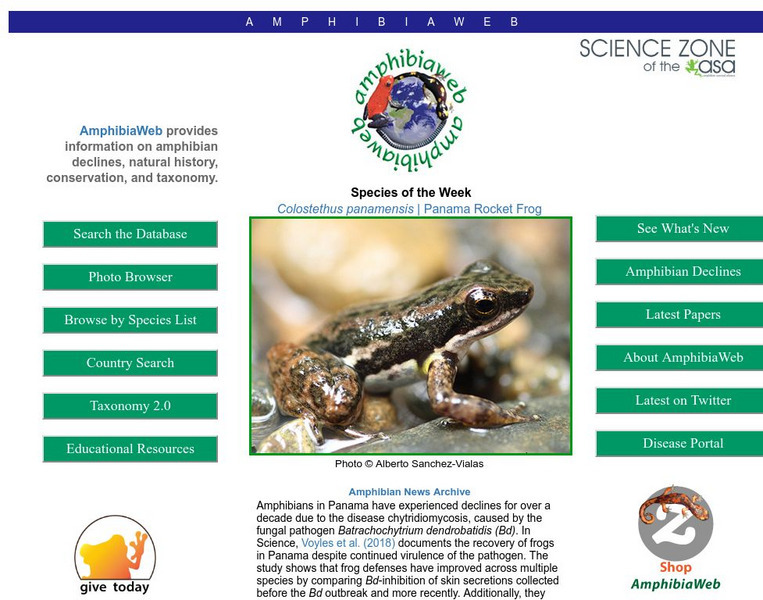C3 Teachers
C3 Teachers: Inquiries: Geography
A learning module on world geography. It includes several supporting questions accompanied by formative tasks and source materials, followed by a summative performance task. Students investigate where their community is located, where...
Utah Education Network
Uen: Human Settlement and Geography
Learn why people live in places with lots of people.
Other
Economy Watch: Australia Economy
A summary of the state of Australia's economy, its economic history, and what the future holds. (Published 2015)
PBS
Pbs Teachers: Scientific American: Spiders! Song and Dance
Explore the diversity and prevalence of spiders around the world, and learn about jumping spiders, hunters that stalk their prey and pounce from a distance. Research the types and population density of spiders that live around you.
Smithsonian Institution
National Museum of Natural History: American Mammals: Western Red Backed Vole
The Western Red-backed Vole lives in conifer forests from the Columbia River south through western Oregon to northern California. Its population densities are greatest in dense, dark forests where there is little or no understory. Learn...
Smithsonian Institution
National Museum of Natural History: American Mammals: Creeping Vole
Creeping Voles are found in moist coniferous forests at all stages of forest succession, from old growth to recent clear-cuts. In fact, population density is probably higher in recently cut areas where more sunlight reaches the ground...
Science Education Resource Center at Carleton College
Serc: Investigating the Ecology of Goldenrod Galls Through Biological Sampling
In this biology field lab exercise, students conduct a stationary population study of goldenrod galls. They examine a host of factors including goldenrod plant density, goldenrod gall density, gall height, gall mass, larval exit hole...
Curated OER
Educational Technology Clearinghouse: Maps Etc: North China, 1971
" North China includes the densely populated and intensively cultivated North China Plain, the loess-covered uplands of Shansi, northern Shensi, and eastern Kansu, and the sparsely populated, semiarid steppes of Inner Mongolia....
Curated OER
Unesco: New Zealand: New Zealand Sub Antarctic Islands
The New Zealand Sub-Antarctic Islands consist of five island groups (the Snares, Bounty Islands, Antipodes Islands, Auckland Islands and Campbell Island) in the Southern Ocean south-east of New Zealand. The islands, lying between the...
Other
University of Leicester: Spiral Galaxies
Provides a general overview of spiral galaxies, including descriptions of the different classes of spiral galaxy.
University of California
Regents of the University of California: Amphibia Web
AmphibiaWeb, a site inspired by global amphibian declines, is an online system that allows free access to information on amphibian biology and conservation. This site is filled with amphibian facts, a glossary of terms, species numbers,...
Texas Instruments
Texas Instruments: Jason: Nutria and the Disappearing Marsh
Disappearing Wetlands: Nutria are rodents associated with the loss of marshes in Louisiana's wetlands through a process known as eat out. This activity examines changes in the nutria population, vegetation density, and marsh area over time.
Texas Instruments
Texas Instruments: The Normal Distribution
In this activity, students will apply the normal density function, normal cumulative distribution function, and inverse normal cumulative function to analyze a population with a normal distribution.
Other popular searches
- Population Density Maps
- Human Population Density
- Geography Population Density
- Comparing Population Density
- Biology Population Density
- Us Population Density
- Population Density in Mali
- Population Density of Cinda
- Population Density of Cina
- Animal Population Density
- Population Density Problems
- Population Density in Canada










